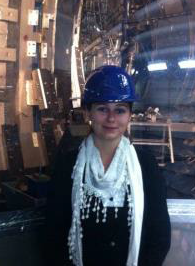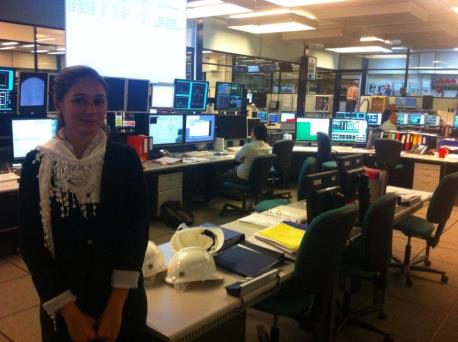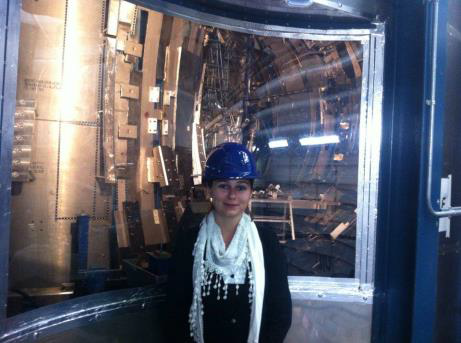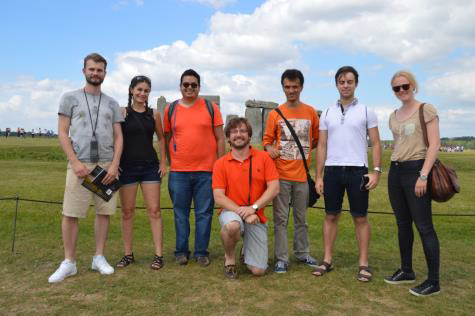Culham Plasma Physics Summer School - Culham Science Centre, UK
Reported by Veronika Klevarova. Powered by FuseNet.
 The Aim of the Summer School was to provide a fundamental introduction to various aspects of plasma physics. In order to do so, basic concepts of the plasma kinetic theory, dynamics, magnetohydrodynamics, classical transport etc. were treated during the first week of the event. I really appreciated the lectures, because they were a good review of the studied material, but they also provided new insights. The advanced topics, such as plasma-material interaction, plasma turbulence and dusty plasmas, were mainly introduced during the second week of the summer school. Especially, the lectures that focused on plasma probing (by various diagnostic methods) and the development of instabilities within plasmas, were interesting for me, since they were relevant in the context of my current work. As a ‘cherry on the cake’, I really enjoyed the presentations focusing on astrophysical and low temperature plasmas. Especially, the bits concerning the magnetospheres of the planets within our Solar system really caught my attention.
The Aim of the Summer School was to provide a fundamental introduction to various aspects of plasma physics. In order to do so, basic concepts of the plasma kinetic theory, dynamics, magnetohydrodynamics, classical transport etc. were treated during the first week of the event. I really appreciated the lectures, because they were a good review of the studied material, but they also provided new insights. The advanced topics, such as plasma-material interaction, plasma turbulence and dusty plasmas, were mainly introduced during the second week of the summer school. Especially, the lectures that focused on plasma probing (by various diagnostic methods) and the development of instabilities within plasmas, were interesting for me, since they were relevant in the context of my current work. As a ‘cherry on the cake’, I really enjoyed the presentations focusing on astrophysical and low temperature plasmas. Especially, the bits concerning the magnetospheres of the planets within our Solar system really caught my attention.
I had been looking forward to the guided tours around the laboratories that were scheduled to take place during the second week of the event. As a remote user of the JET database, it was very interesting for me to see the actual device and to get a picture of its size and overall complexity. Unfortunately, we could not enter the torus hall itself, but as a part of the tour we could see the machine's mock-up and we witnessed a real discharge when visiting the control room. Combining this experience with the experiences I gained at COMPASS-D during the previous years, I have a good idea of the of large number of experts that are required in order to operate ITER. Also the tour at the Rutherford Appleton Laboratory was very interesting, during which we could see the Vulcan laser, which is an important device for the development of inertial confinement fusion.


Visiting the JET control room and the JET mock-up.
About 50 students of 27 nationalities participated at the event, all sharing an interest for plasma and fusion physics. And even though two weeks is a relatively short time, friendships were built, which will hopefully be maintained during the coming years. For some of the participants, the event served as their first introduction to plasma physics and I believe that the quality of the lectures has made sure that they were introduced as good as possible to this scientific field.
The social program was also extensive and was either organised as part of the event (a boat trip on the river Thames, a welcome dinner and a banquet at St Edmund Hall) or self-organized by the students. During the weekend, we had the opportunity to explore Oxford and/or its surroundings. For example, me and few other students, visited Stonehenge, the city of Baths and several other touristic sites in the neighbourhood. Nevertheless, there are still plenty of interesting places that were left to be visited during the next time I am in the area.
Finally, I would like to thank FuseNet for supporting me. The event has been a valuable experience, both, from a professional and personal point of view.


Participants of the Culham Summer School at Stonehenge (left) and visiting the Roman Baths at the city of Baths (right).
